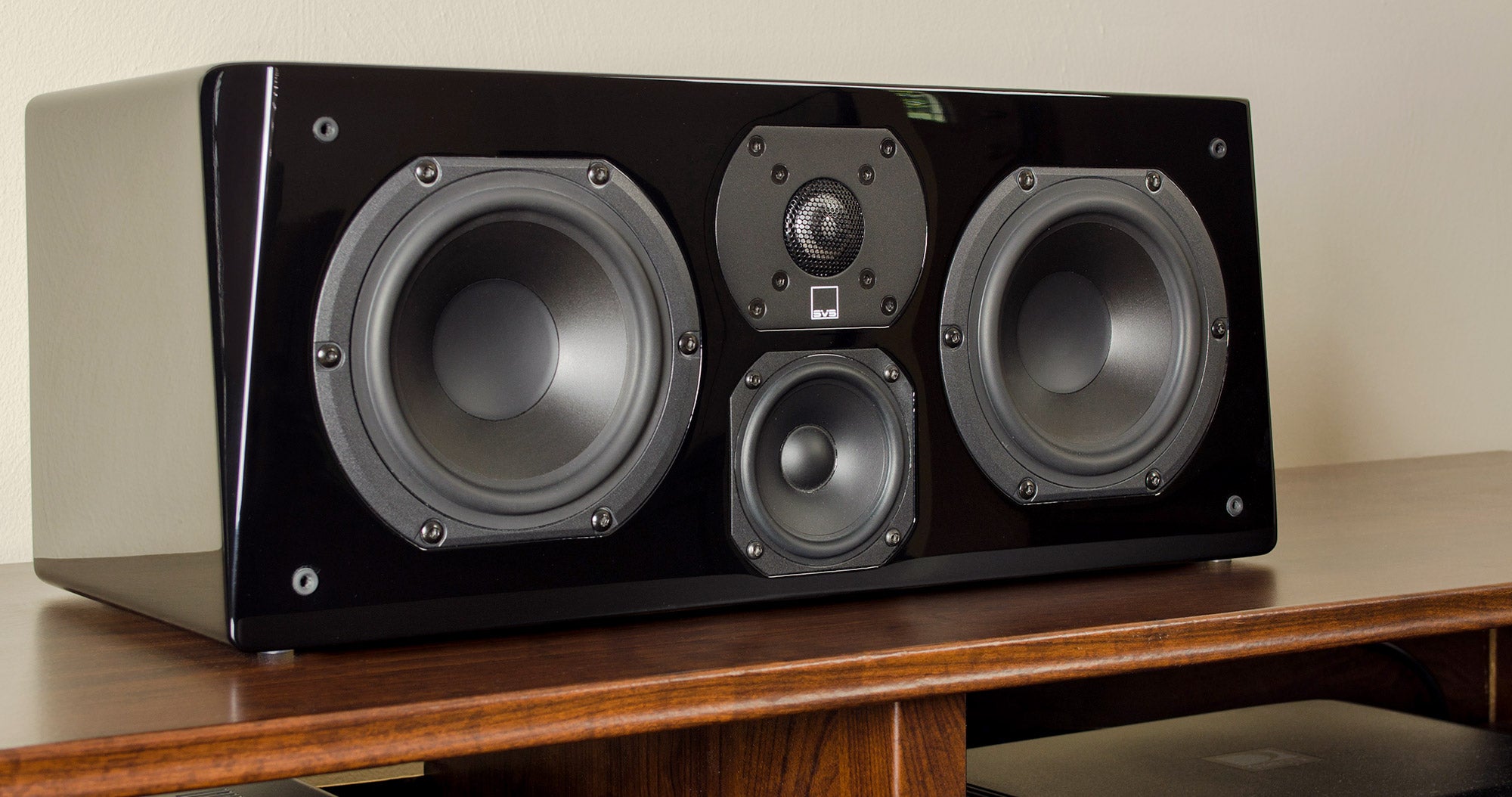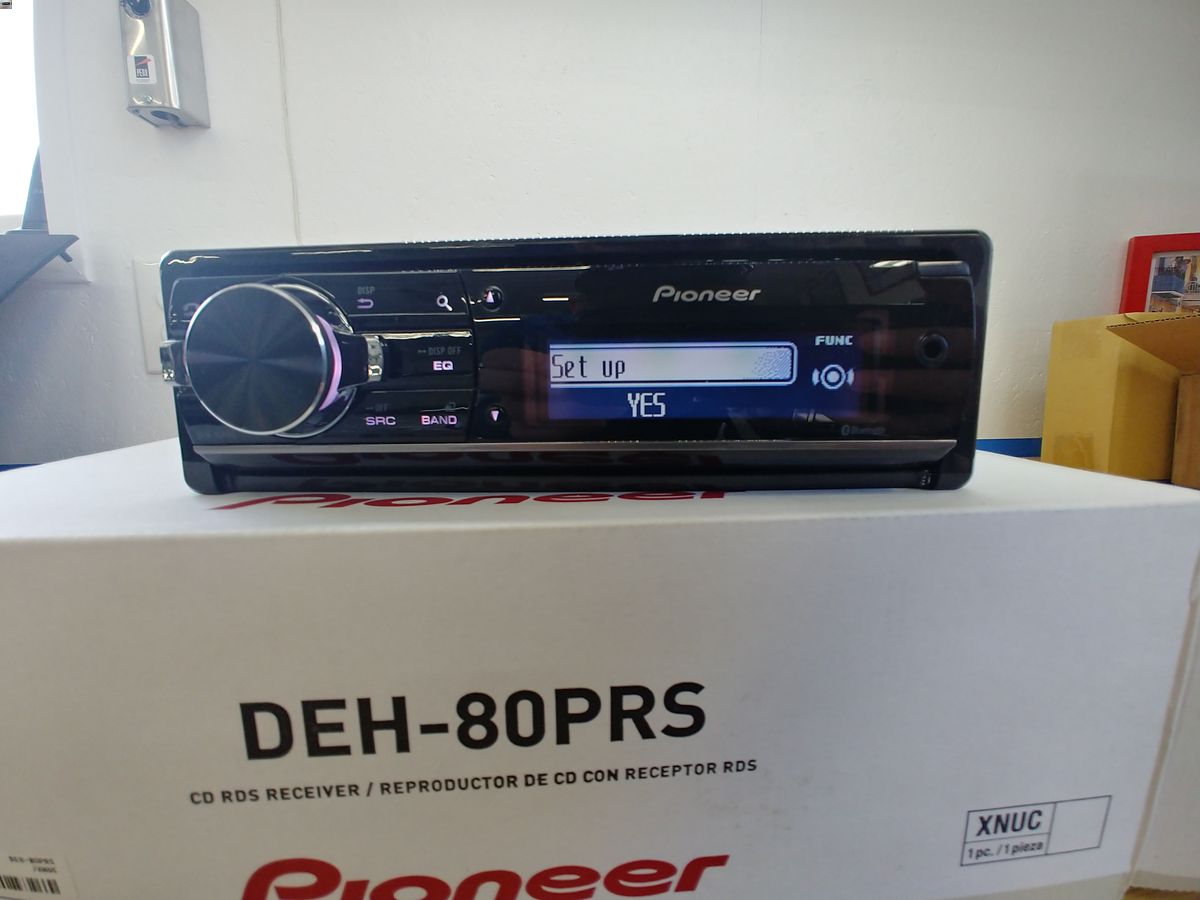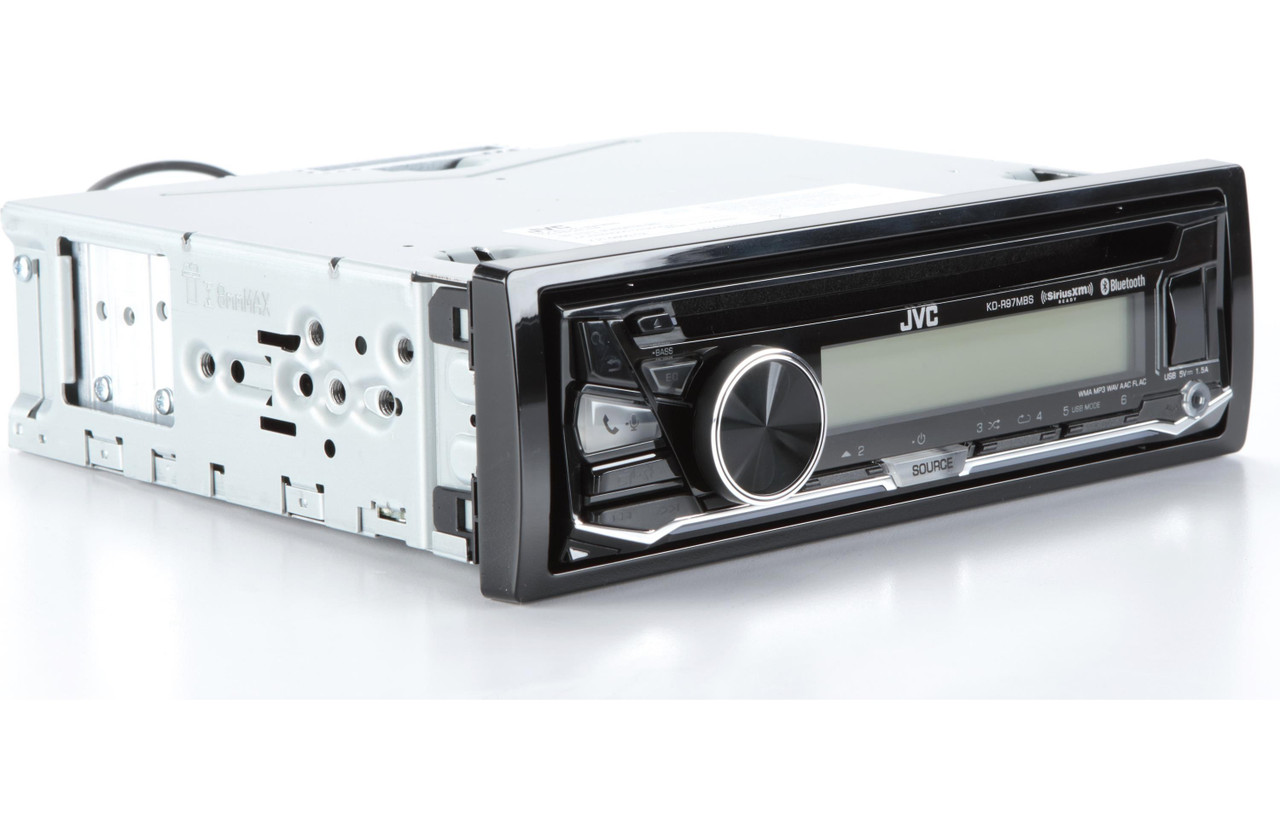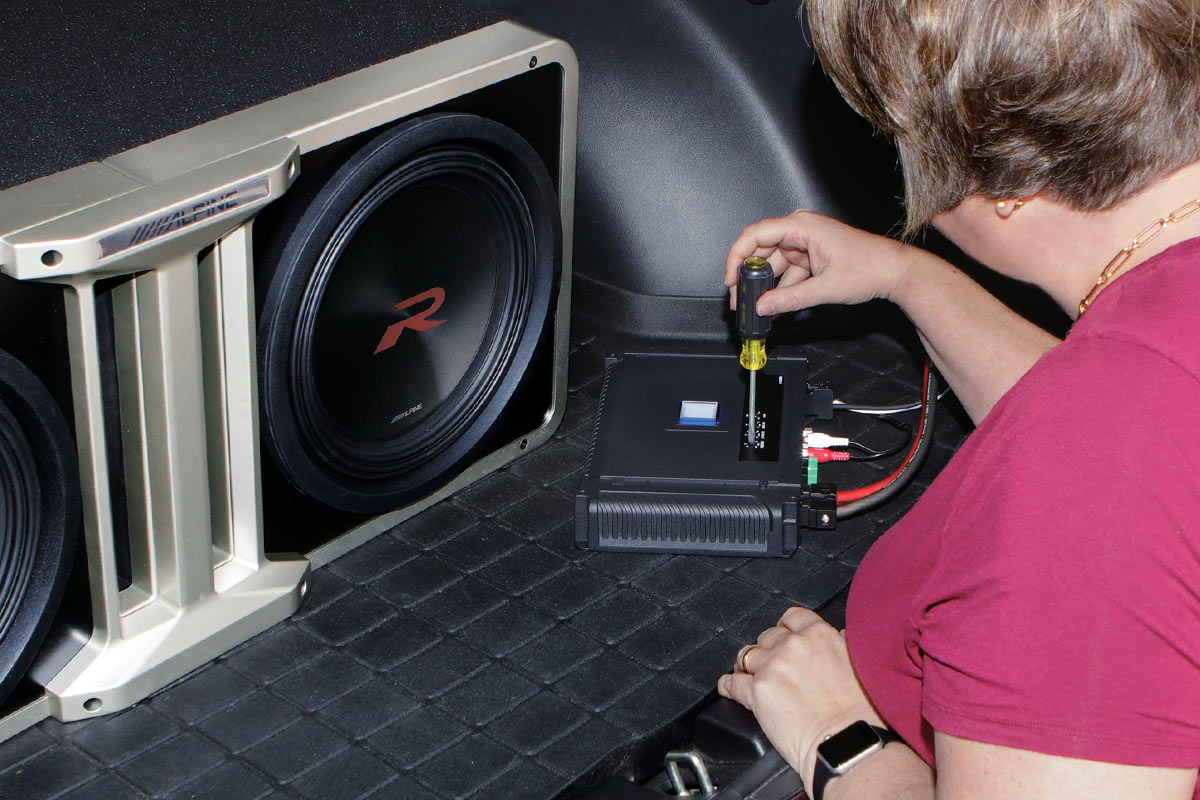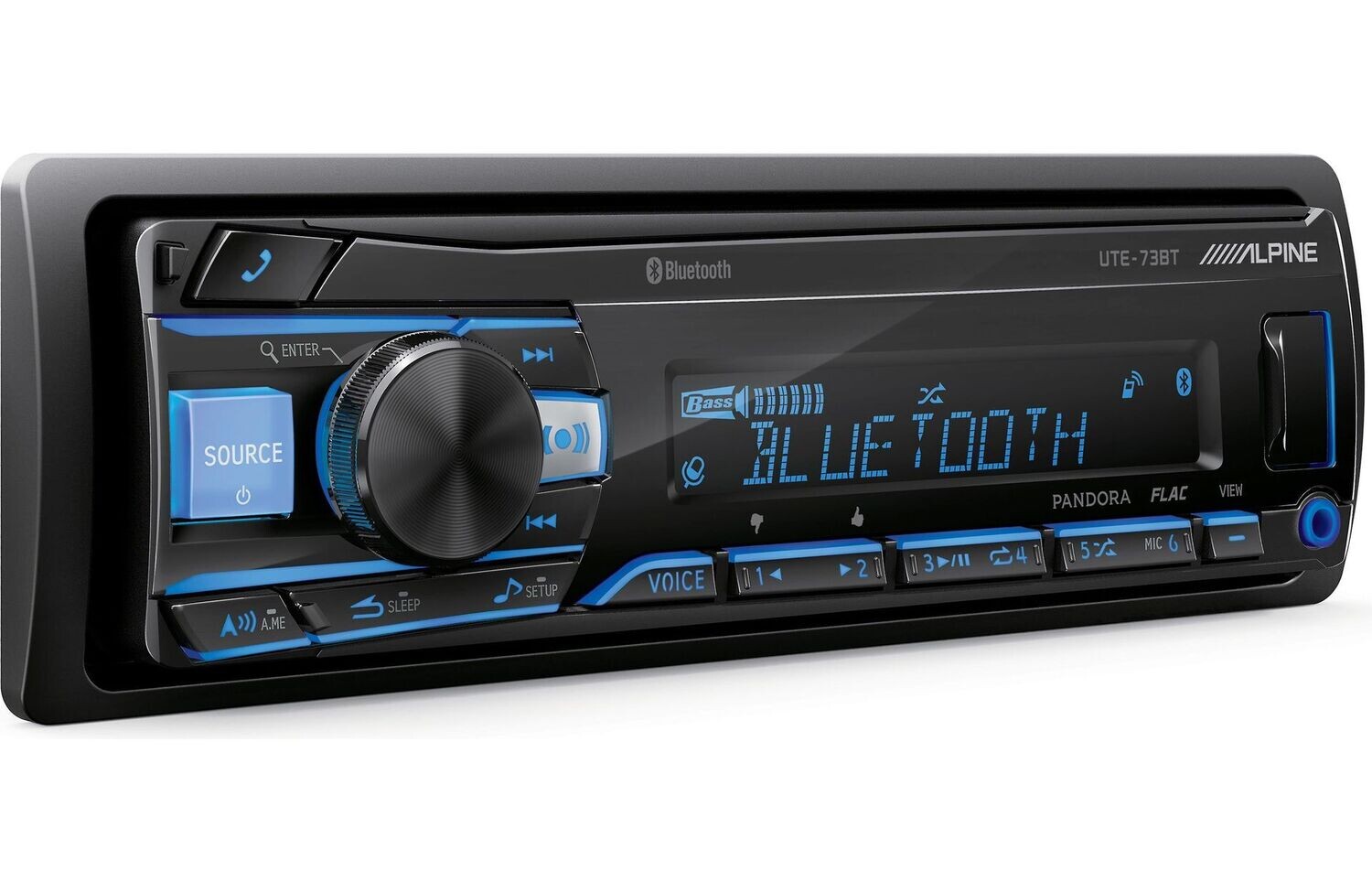Home>Production & Technology>Stereo>How To Connect 6 Speakers To A Car Stereo
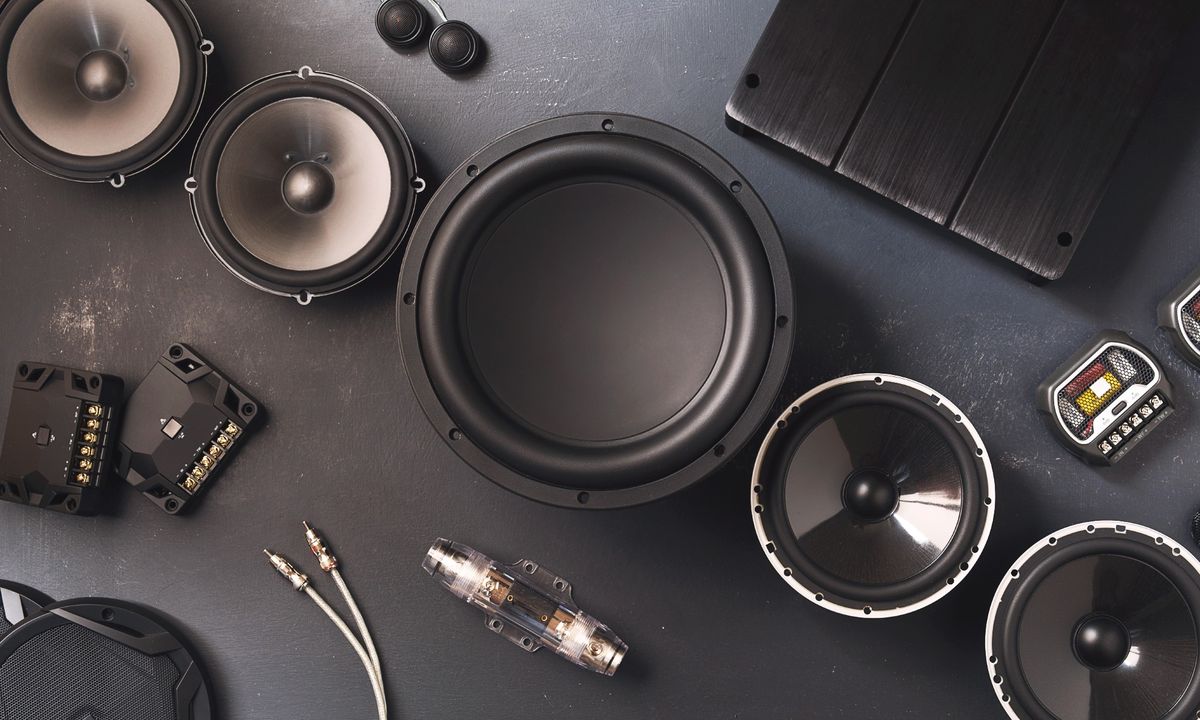

Stereo
How To Connect 6 Speakers To A Car Stereo
Modified: January 22, 2024
Learn how to connect six speakers to your car stereo and enhance your audio experience. Get step-by-step instructions and expert tips for optimizing your stereo's performance.
(Many of the links in this article redirect to a specific reviewed product. Your purchase of these products through affiliate links helps to generate commission for AudioLover.com, at no extra cost. Learn more)
Table of Contents
Introduction
When it comes to upgrading your car audio system, adding additional speakers can significantly enhance the overall sound experience. However, connecting multiple speakers to a car stereo can be a daunting task, especially if you’re not familiar with the technical aspects of car audio systems. In this article, we will guide you on how to connect six speakers to a car stereo to elevate your in-car audio to new heights.
Before diving into the steps, it’s important to understand the different types of speakers and their configurations. Typically, car audio systems utilize two main types of speakers: component speakers and coaxial/full-range speakers.
Component speakers are known for their superior sound quality as they consist of separate components for tweeters, mid-range drivers, and woofers. On the other hand, coaxial or full-range speakers combine all these components into one package, making them easier to install but sacrificing some sound accuracy.
Before attempting to connect six speakers to your car stereo, it’s crucial to determine whether your car stereo is compatible with multiple speakers. This can be done by referring to the user manual or contacting the manufacturer for specifications. Some car stereos have built-in capabilities to power multiple speakers, while others may require additional amplifiers to distribute audio signals effectively.
To ensure a seamless connection between your car stereo and speakers, you may need wiring harnesses and adapters. These accessories help in matching the electrical connections and plug types between the speakers and the car stereo. It’s essential to use the appropriate wiring harnesses and adapters that are compatible with your specific car make and model.
Now that we understand the basics, let’s delve into the steps required to connect six speakers to your car stereo. Keep in mind that the actual process may vary depending on the car make, model, and stereo system you’re working with. It’s always recommended to refer to the user manual or seek professional assistance if you’re uncertain about any step.
Speaker Types and Configuration
Before connecting six speakers to your car stereo, it’s essential to understand the different speaker types and how they can be configured. This knowledge will help you make informed decisions about which speakers to install and how to set them up for optimal sound quality.
1. Component Speakers: Component speakers consist of separate tweeters, mid-range drivers, and woofers. These speakers are known for their exceptional sound quality and allow for better audio imaging and separation. They are typically installed in custom locations, such as the doors or dashboard, to optimize soundstage and clarity.
2. Coaxial/Full-Range Speakers: Coaxial or full-range speakers combine all the speaker components (tweeter, mid-range driver, and woofer) into a single unit. They are easier to install as they often fit into existing speaker locations. While they may not offer the same level of audio accuracy as component speakers, they still provide decent sound quality and are a popular choice for car audio upgrades.
3. Subwoofers: If you want to enhance the low-frequency performance of your car audio system, consider installing subwoofers. Subwoofers are specialized speakers designed specifically to reproduce deep bass frequencies. They can be installed in the trunk or rear cargo area of your vehicle to add depth and impact to your music.
Now that we’ve discussed the different types of speakers, let’s move on to the configuration options:
1. Front and Rear Speakers: This is the most common configuration and involves installing two speakers in the front (typically component speakers) and two speakers in the rear (either component or coaxial speakers). This setup provides a balanced soundstage and allows for immersive audio experiences for both the driver and passengers.
2. Front, Rear, and Center Speakers: For a more advanced audio setup, you can add a center channel speaker. The center speaker is typically used to enhance dialogue and vocals, making it ideal for those who frequently listen to music or watch movies while driving. This configuration requires a compatible car stereo that supports a center channel output.
3. Front, Rear, and Subwoofer: To achieve a powerful and impactful bass response, you can include a subwoofer in your setup. The subwoofer is responsible for reproducing the low-frequency elements of your audio, adding depth and richness to the overall sound. This configuration delivers a well-rounded audio experience, particularly for music genres that heavily rely on bass.
Remember, when configuring your speakers, it’s crucial to consider factors such as speaker compatibility, power handling, and available space in your vehicle. Taking these considerations into account will ensure that your speaker setup is optimized for the best possible sound quality.
Determining Compatibility with Car Stereo
Before connecting six speakers to your car stereo, it’s important to determine whether your current car stereo is compatible with multiple speakers. This will ensure that the audio signals are distributed effectively and that the stereo can power all the connected speakers without any issues. Here are some key factors to consider:
1. Power Output: Check the power output of your car stereo. The power output is typically measured in watts per channel (WPC) and indicates how much power the stereo can deliver to each speaker. Make sure that the power output is sufficient to handle the total power requirements of all the connected speakers. It’s important not to overload the stereo, as this can cause distortion or even damage to the equipment.
2. Impedance Matching: Pay attention to the impedance rating of both the speakers and the car stereo. Impedance is measured in ohms and represents the resistance that the speaker presents to the flow of electrical current. It’s crucial to match the impedance of the speakers with the impedance range supported by the car stereo. Mismatched impedance can lead to poor sound quality or overheating of the stereo.
3. Wiring Configuration: Consider the wiring configuration of your car stereo. Some car stereos support a parallel wiring configuration, where multiple speakers are wired in parallel to a single stereo channel. Others may have separate outputs for front and rear speakers, requiring additional channels or amplifiers to connect all the speakers. Consult the user manual or contact the manufacturer to understand the wiring options available.
4. Additional Amplifiers: Depending on your car stereo’s power output and the number of speakers you want to connect, you might need additional amplifiers. Amplifiers help boost the audio signal and provide more power to the speakers. If your car stereo doesn’t have enough power to accommodate all the speakers, consider investing in a separate amplifier to ensure optimal performance.
5. Compatibility with Wiring Harnesses: Different car models may have varying wiring harnesses and connectors. Ensure that your car stereo is compatible with the wiring harnesses and connectors required for connecting multiple speakers. You may need additional adapters or wiring harnesses to ensure a proper and secure connection between the stereo and the speakers.
When in doubt about the compatibility of your car stereo with multiple speakers, it’s always best to consult a professional car audio installer or refer to the user manual for specific guidelines. They can provide expert advice and recommendations tailored to your specific car model and audio system.
Wiring Harness and Adapters
When connecting six speakers to a car stereo, using the appropriate wiring harnesses and adapters is crucial to ensure a seamless and secure connection. These accessories help in matching the electrical connections and plug types between the speakers and the car stereo. Here’s what you need to know:
1. Wiring Harness: A wiring harness acts as a bridge between your car stereo and the speakers. It simplifies the installation process by providing pre-wired connectors that match the plug types on both ends. This ensures a proper and secure connection, eliminating the need for cutting and splicing wires. Wiring harnesses are typically designed to match specific car makes and models, so make sure to choose the right one for your vehicle.
2. Speaker Adapters: Speaker adapters are particularly useful when upgrading your car’s audio system as they allow you to install speakers of different sizes or shapes than the factory-fitted ones. These adapters are usually made of plastic or metal and come in various sizes to fit different car models. They ensure a proper fit and alignment of the speakers in the designated speaker locations, preventing any rattling or vibrations when playing audio.
3. Power Distribution Blocks: When connecting multiple speakers, you might need a power distribution block to ensure an even distribution of power to each speaker. Power distribution blocks are essentially junction blocks that take a single power source and split it into multiple outputs. This allows you to connect multiple speakers without overloading the car stereo’s power capabilities. It’s important to choose a power distribution block that matches the power requirements of your speakers and amplifier.
4. RCA Cables: If you plan to use an amplifier in your setup, you’ll need RCA cables to connect the amplifier to your car stereo. RCA cables are used for transmitting audio signals and come in various lengths and quality levels. It’s essential to choose high-quality cables to minimize signal loss and interference, resulting in cleaner and more accurate sound reproduction.
5. Connectors, Crimping Tools, and Electrical Tape: Don’t forget to have connectors, crimping tools, and electrical tape on hand for securing the connections and preventing any loose wires. Connectors such as butt connectors or crimp terminals can be used to join wires together and provide a sturdy and reliable connection. Crimping tools are necessary for properly crimping the connectors onto the wires. Additionally, electrical tape can be used to insulate and protect the connections from any potential damage.
Before purchasing wiring harnesses, adapters, and other accessories, ensure they are compatible with your specific car make and model. It’s also a good idea to double-check the user manual or consult a knowledgeable professional to confirm the compatibility and suitability of these accessories for your particular car audio system.
Tools and Materials Required
Before embarking on the task of connecting six speakers to your car stereo, it’s important to gather the necessary tools and materials. Having the right equipment on hand will make the installation process much smoother and ensure a successful outcome. Here are the essential tools and materials you’ll need:
- Wire cutters/strippers: These tools will come in handy for cutting and stripping the insulation from wires, making it easier to connect them to the speakers and stereo.
- Crimping tool: A crimping tool is necessary for properly crimping connectors onto the wires, ensuring a secure and reliable connection.
- Screwdriver(s): Depending on the type of car stereo and speakers you’re working with, you may need Phillips or flathead screwdrivers to remove panels, mount speakers, or secure wiring connections.
- Socket set or wrench: If you need to remove or install any mounting brackets or speaker housings, a socket set or wrench will be necessary.
- Electrical tape: Electrical tape is crucial for insulating and securing wire connections, protecting them from any potential short circuits or damage.
- Wiring harnesses and adapters: As previously discussed, you’ll need the appropriate wiring harnesses and adapters to match the connectors between the car stereo and speakers. Make sure to choose ones that are compatible with your car make and model.
- RCA cables: If you plan to use an amplifier in your setup, you’ll need RCA cables to connect the amplifier to the car stereo. Choose high-quality cables of the appropriate length for optimal sound transmission.
- Power distribution block: If you’re connecting multiple speakers and using an amplifier, a power distribution block may be necessary to ensure proper power distribution without overloading the car stereo.
- Speaker wire: High-quality speaker wire will be needed to connect the speakers to the car stereo or amplifier. Make sure to choose the appropriate gauge based on the power requirements and distance between the speakers and stereo.
- Speaker brackets/mounts: Depending on your vehicle and the speakers you choose, you may need speaker brackets or mounts to securely install the speakers in designated locations.
It’s important to gather all these tools and materials before starting the installation process to ensure a smooth and efficient workflow. Additionally, be sure to follow the manufacturer’s guidelines and instructions for any specific tools or materials needed for your car stereo and speakers.
Speaker Placement and Mounting
Proper speaker placement and mounting are vital for achieving optimal sound quality in your car audio system. The location and positioning of the speakers can greatly impact the overall audio experience. Here are some key points to consider when it comes to speaker placement and mounting:
1. Front Speakers: The front speakers play a crucial role in creating a balanced and immersive soundstage. They are typically installed in the doors or dashboard area. Consider the following tips for front speaker placement:
- Door Mount: Many vehicles have designated speaker locations in the front doors. These locations are often pre-wired and may have mounting brackets or adapters. Use these locations for a seamless and factory-like installation.
- Custom Kick Panels: If your vehicle doesn’t have designated speaker locations in the doors, you can create custom kick panels to house the front speakers. Kick panels are typically made of fiberglass or plastic and can be customized to fit your specific car model.
- Dash Mount: Some vehicles have factory speaker locations in the dashboard. Consider this option for front speaker installation if available, as it can provide a more direct sound transmission towards the listener.
2. Rear Speakers: Rear speakers can enhance the overall sound experience and provide a more immersive audio environment for passengers. Consider the following tips for rear speaker placement:
- Rear Deck: Many vehicles have rear deck locations, which are areas behind the rear seats. These areas often have pre-wired speaker connections and may include mounting brackets. Install the rear speakers in these locations for a clean and integrated look.
- Custom Enclosures: If your vehicle doesn’t have rear deck locations, you can create custom speaker enclosures in the trunk or rear cargo area. These enclosures provide a controlled environment for the speakers and can optimize sound quality.
- Door Panels: In some vehicles, rear doors may also have designated speaker locations. Consider utilizing these locations if available.
3. Subwoofer Placement: Subwoofers are specialized speakers designed for low-frequency reproduction. The placement of the subwoofer significantly impacts the bass response and overall impact of the audio system. Here are some suggestions for subwoofer placement:
- Trunk/Cargo Area: The most common location for a subwoofer is in the trunk or rear cargo area. This provides ample space for the subwoofer to operate effectively.
- Custom Enclosures: To optimize the bass response, consider using a custom subwoofer enclosure. These enclosures are specifically designed to match the subwoofer’s specifications and create an air-tight and controlled environment.
- Under Seat: Some vehicles offer under-seat subwoofer options. These compact subwoofers can fit under the front seats, saving trunk space while still providing a satisfying bass performance.
Keep in mind that speaker placement and mounting options may vary depending on your vehicle’s make and model. It’s important to refer to the user manual or consult professional installers to determine the best placement options for your specific car audio system.
Connecting the Speakers to the Car Stereo
Now that you have determined the speaker placement and mounted the speakers in the appropriate locations, it’s time to connect them to your car stereo. Here is a step-by-step guide on how to connect the speakers:
- Identify the speaker wires: Start by identifying the speaker wires on your car stereo. Typically, these wires are labeled with positive (+) and negative (-) markings or color-coded for easy identification.
- Strip the speaker wires: Use wire strippers to strip a small portion of insulation from the ends of the speaker wires. This will expose the metal wire strands for a secure connection.
- Connect the positive terminal: Take the positive wire from the first speaker and connect it to the positive terminal on the corresponding speaker output of the car stereo. Ensure a snug fit by twisting the wire strands together or using a connector specifically designed for speaker connections.
- Connect the negative terminal: Similarly, connect the negative wire from the first speaker to the negative terminal on the corresponding speaker output of the car stereo.
- Repeat for all speakers: Follow the same procedure for connecting the remaining speakers. Connect the positive and negative wires of each speaker to their respective terminals on the car stereo. Double-check your connections to ensure polarity is correct.
- Connect to an amplifier (if applicable): If you are using an amplifier in your setup, connect the speaker wires to the amplifier’s speaker outputs according to the manufacturer’s instructions. The amplifier will then connect to the car stereo either through RCA cables or high-level speaker inputs.
- Test the connections: Before finalizing the installation, test the speaker connections by playing some audio. Make sure each speaker is producing sound and that the stereo settings are configured correctly for optimal sound balance.
- Secure the wiring: Once you have confirmed that all speakers are working properly, secure the wiring by using zip ties or mounting clips. This will prevent any loose or dangling wires that could potentially interfere with the functionality of the speakers.
Remember to consult the user manual of your car stereo for specific instructions and refer to any wiring diagrams provided. If you are unsure about any step, it’s always best to seek professional assistance to ensure a proper and safe installation.
Testing and Troubleshooting
After connecting the speakers to your car stereo, it’s crucial to thoroughly test the audio system to ensure everything is working correctly. Additionally, if you encounter any issues or inconsistencies, troubleshooting can help identify and resolve the problem. Here are some steps for testing and troubleshooting your speaker setup:
1. Audio Playback: Begin by playing different types of audio content, such as music, podcasts, or audio files with various frequencies. Pay close attention to the sound quality, balance, and volume levels. Ensure that all speakers are producing sound and that there are no distortions, crackling noises, or vibrations.
2. Stereo Settings: Check the stereo settings to confirm that the audio is properly balanced between the front and rear speakers. Adjust the fade and balance controls if necessary to achieve the desired sound distribution throughout the vehicle.
3. Polarity Check: To ensure correct speaker polarity, listen carefully for any phase cancellations or loss of bass. If the bass seems weak or the audio sounds off, you may need to reverse the wiring connections for one or more speakers. This will help align the speakers’ sound waves and prevent interference.
4. Speaker Distortion: Listen for any signs of speaker distortion, particularly at higher volume levels. Distortion can occur when the amplifier or car stereo is pushed beyond its limits. If you notice distortion, consider reducing the volume or investing in a more powerful amplifier to adequately drive the speakers.
5. Wiring Inspection: Inspect the wiring connections to ensure they are secure and properly insulated. Loose or incorrect wiring can cause poor sound quality or intermittent speaker performance. Use a multimeter to check for continuity and make sure there are no breaks or short circuits in the wiring.
6. Amplifier Settings: If you are using an amplifier, check the amplifier settings to ensure they are properly configured for your speaker setup. Adjust the gain, crossover, and EQ settings as necessary to optimize the sound quality and avoid any clipping or distortion.
7. Troubleshooting Common Issues: If you encounter any issues during testing, consider the following troubleshooting steps:
- Check all connections: Ensure all speaker and wiring connections are secure and properly seated.
- Verify power supply: Confirm that the car stereo and amplifier, if present, are receiving sufficient power and have not blown any fuses.
- Inspect speakers: Examine each speaker for any physical damage or signs of malfunction, such as torn cones or damaged voice coils.
- Eliminate interference: Check for any sources of electromagnetic interference, such as improperly grounded components or nearby electronic devices.
- Consult professionals: If you are unable to resolve the issue, consider seeking assistance from professional car audio installers or contacting the customer support of your car stereo or speaker manufacturer.
By thoroughly testing your speaker setup and troubleshooting any issues that arise, you can ensure optimal sound quality and performance from your car stereo system.
Conclusion
Connecting six speakers to a car stereo can elevate your in-car audio experience to new heights, providing immersive sound and enhancing your overall driving pleasure. By following the steps outlined in this guide, you can successfully install and connect the speakers, optimizing sound quality and ensuring a seamless integration with your car stereo system.
Throughout the process, it is important to consider the compatibility of your car stereo with multiple speakers, use the appropriate wiring harnesses and adapters, and carefully position and mount the speakers in the optimal locations. Taking these steps will help to ensure the best possible audio performance.
Testing and troubleshooting are essential to fine-tuning the setup and addressing any issues that may arise. By thoroughly analyzing the sound quality, verifying the wiring connections, and troubleshooting common problems, you can achieve the desired audio output and resolve any potential challenges along the way.
Remember, if you are uncertain about any step or encounter difficulties during the installation process, it is always a good idea to consult professional installers or refer to the user manual for your specific car stereo and speakers.
With the right knowledge, tools, and attention to detail, you can successfully connect six speakers to your car stereo and enjoy a premium audio experience on every journey you take.

